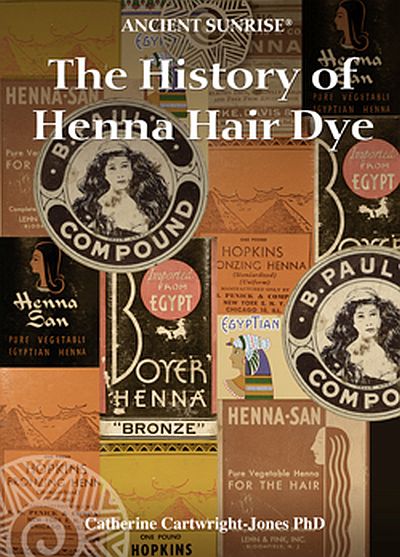The History of Henna Hair Dye is an expanding collection of research papers on the history of henna approached through the effect of climate change and human migrations on henna since the most recent glacial period to the present. The separate chapter headings in the history section are listed below for your download convenience. Click on each chapter heading below to download or view each article.

Theoretical Use of Henna in Prehistory
- The History of Henna Hair Dye in Pre-History
- Henna in Ancient Egypt
- Henna in the Ebers Papyrus
Henna, Astronomy, and the Agro-Ecology of the Mediterranean Bronze Age
- The Evolution and Migration of Henna into Cultural Practices
- Henna, Astronomy, and the Agro-Ecology of the Mediterranean Bronze Age
- Evidence of henna in the wall paintings of 1600 BCE lustral basin in Xeste III prior to the Santorini eruption
- Artifacts showing markings consistent with a bride with hennaed hands in depictions of women in the Bronze Age Eastern Mediterranean
- Henna in Mycenae at the End of the Bronze Age
Ancient Mesopotamian and Levantine Henna
- Evaluating claims of ancient henna use and searching for origins
- Henna and Mesopotamia
- Henna, conquest, and change following the collapse of the Bronze Age
- The Royal Unguent
- Henna in archeology, cultural assumptions and imaginings
- Conquest, identity, and the erasure of henna in the southern Levant
- Reading ninth century BCE henna in the Book of Kings: Jezebel
- Echoes of Bronze Age Canaanite Henna in the Song of Songs
- Imagining Queen Esther
Evidence of henna use and difference among neighbors
Early cultural henna use in the Arabian Peninsula and along the Arabian Sea
- Evidence of early cultural henna use in the Arabian Peninsula and along the Arabian Ocean
- Yemen and the Sabean Kingdom
- Imagining Bilqis, the Queen of Sheba, with or without henna
- The environmental limitations of henna [Lawsonia inermis] cultivation around the Arabian Ocean
- Ambiguation and disambiguation of hair dye in South Asia
- Ambiguation and disambiguation of red body markings in South Asia
Climate Collapse and the dispersion of henna across North Africa
- Henna during the Late Bronze Age in the Mycenaean Eastern Mediterranean
- Henna in the Pylian perfume industy
- Henna and the Poseidon festival
Henna’s Significance in Amazigh Id, Circumcision and “Night of the Henna” Celebrations
- Spanish people and saints were depicted with hennaed hands, feet, and hair, and there are records of henna mills, henna artists, and laws regulating henna from the Iberian Peninsula between 900 CE and 1560 CE.
Henna and Menstruation
Henna and the Persian Hamam
Henna and the North African Hamam

